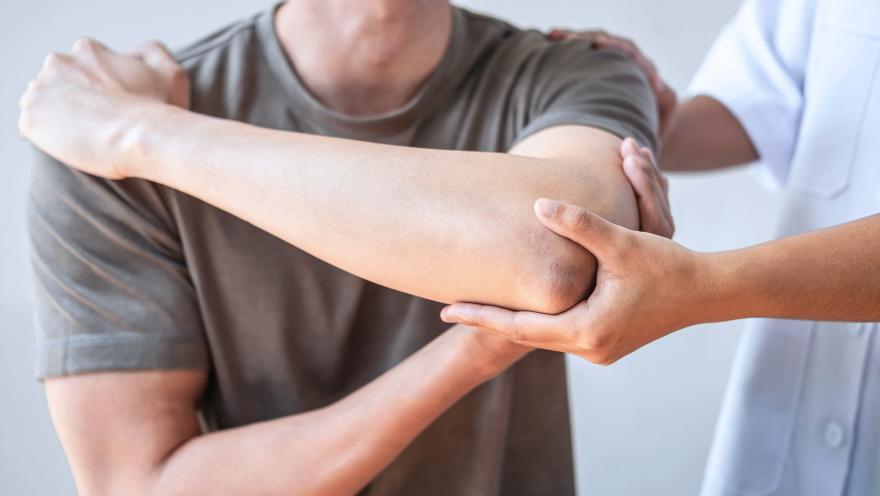October is National Physical Therapy Month, a time to shine a spotlight on the work physical therapists do and recognize the vital role they play in helping their patients manage challenges with mobility. And for people living with ALS, a physical therapist (PT) is a critical member of the multidisciplinary care team providing the specialized care they need.
No two cases of ALS are the same, but every person diagnosed with the disease will experience mobility challenges in some way at some point. Understanding the best course of action to take when these challenges arise can be confusing and time consuming, but for people with ALS and their caregivers, there are strategies and solutions to consider.
The ALS Association has resources available on our website for both people with ALS and their caregivers relating to mobility and exercise. And as importantly, there are physical therapists who are willing to offer both advice and assistance on these topics.
The ALS Association developed a comprehensive video series to address the mobility changes people living with ALS and their caregivers often face. “I think one of the things that I think overall that is sort of the underlying theme of all of this is that this is just so overwhelming and daunting,” said Physical Therapist Shannon Terrell. “And there's so many things to know that you don't even know to ask about because you don't know it yet.”
Among the first activities a PT will typically recommend are range of motion and stretching exercises to help people living with ALS maintain flexibility, making movement easier. Stretches can be either active, meaning a person with ALS does the stretching exercises themselves, or passive, meaning a caregiver moves their limbs to perform the stretches.
These sorts of activities can be done in various ways, at numerous points during the day. “I've been shown some very simple exercises to do that help, I think, to keep my fingers from drawing into clubs or claws.” said Mark Weston, in his conversation with Terrell. Mark was diagnosed with ALS in 2019. “As simple as when going to sleep, find a headboard and straighten out your hand and push against the headboard,” he shared. “Or form circles with your fingers, particularly the little finger of the thumb and the forefinger and the thumb. These are easy to do while you're not doing anything else. Or easy to do if you're doing something else and they don't require any exertion at all.”
There are emotional benefits in addition to the physical benefits these exercises provide. “Positioning also can affect your ability to make eye contact with your friends and family members and be able to maintain that connection with people when you're speaking with them, or even if you're communicating without speech,” says Terrell.
And while your PT might remind you of a mom telling you to sit up sit up straight, that advice is given for a good reason. “We talk about posture, and it sounds kind of naggy, but posture and positioning, what it truly comes down to is getting all of your body parts in the most perfect anatomical position that we can, based on the way that human beings are designed and the way that our muscles and our joints and our bones are supposed to function properly,” says Terrell. “So there's so many ways that proper positioning can be helpful.”
A physical therapist can also use their experience to anticipate future challenges and put in place plans to address them. “I hope that you can take home with you, and others hopefully too, is that you don't have to reinvent the wheel with this,” Terrell says. “And there's people out there that specialize in this, and they know things that you don't have to know.”
Above all, physical therapists are problem solvers, there to offer the best strategies and solutions to do the things you want to do. “I think I'm not fooling myself to believe that physical therapy that focuses on stretching of those muscles, particularly those that have begun to atrophy, is certainly going to improve the quality of my life,” said Mark.
To learn more about how to improve mobility while living with ALS, visit our website HERE, or download our resource guide, Functioning When Mobility is Affected by ALS, HERE.
To continue to follow stories from people in the ALS community and learn more about the disease, subscribe to receive our weekly blogs in your inbox HERE or follow us at als.org/blog


Join the conversation. Please comment below.